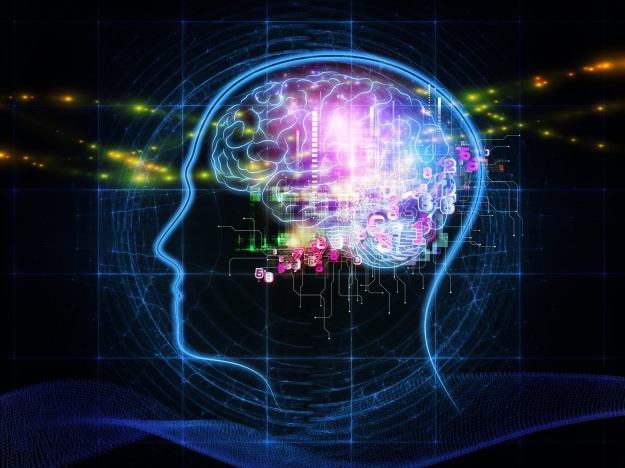
Links to neurofeedback resources
ANGEWANDTE NEUROWISSENSCHAFT AKTUELLES
Neuigkeiten aus der Welt der angewandten Neurowissenschaft
GESUNDHEIT
Einen neuen Meilenstein in der non-pharmakologischen Behandlung von Depressionen?
Was die soziale Ängstlichkeit der autistischen Kindern lindert...
Ein Schritt näher an Verständnis der neuronalen Kommunikation...
Aus dem Bauch heraus...
fMRI-neurofeedback der Insula - eine neue Hoffnung für Autismus?
http://journal.frontiersin.org/article/10.3389/fnbeh.2015.00038/abstract
Zurück zur Kindheit; kann unser Gehirn wieder jung werden?
http://neurosciencenews.com/brain-plasticity-gaba-neurons-2051/
Warum schlafen wir?
http://www.bbc.co.uk/news/science-environment-32606341
NEUE TECHNOLOGIEN
http://www.wired.com/2015/05/internet-anything-brain-monitors-going-mainstream-despite-skepticism/
NEUROREHABILITATION
Quantitative EEG Neurometric Analysis-Guided Neurofeedback Treatment in Postconcussion Syndrome (PCS) - Forty Cases. How Is Neurometric Analysis Important for the Treatment of PCS and as a Biomarker?
http://journals.sagepub.com/doi/pdf/10.1177/1550059416654849
http://www.medscape.com/viewarticle/840523
LITERATURLISTE
|
a) Neurofeedback - Psychophysiologie - ADD/ADHD
|
||||||||||||||||||||||||||||||||||||||||||||||||||||||||||||||||||||||||||||||||||||||||||||||||||||
|
|
b) Wissenschaftstheorie, Gehirnforschung
|
||||||||||||||||||||||||||||||||||||||||||
|
|
c) Light-Sound-Technik
|
||||||||||||||||||
|
|
d) Sport - high-performance - Mental-Training
|
||||||||
|
|
e) AD/HS-Web-Seiten mit Informationen oder Selbsthilfe
|
| www.ADDchaotic.de www.ads-elterntraining.de www.hyperaktiv.de www.hypies.com www.zappelphilipp.de www.aeuk.de (Bundesverband Arbeitskreis überaktives Kind e.V.) www.osn.de/user/hunter/badd.htm (Bundesverband Aufmerksamkeitsstörungen/Hyperaktivität e.V.) www.s-line.de/homepages/ads(AdS. e.V. - Elterninitiative zur Förderung von Kindern mit AD/HS) |
|
Hartmann Ritalin
|
Erfahrungsbericht: Ritalin, Thom Hartmann Should we be concerned about medications?Although I've spent most of my life enjoying the role of the boy who pointed out the emperor wasn't wearing any clothes, this is one time I hope I'm wrong. Because if I'm right, it means we're doing some serious and irreversible damage to millions of children and adults. As you know, I've never been an opponent of medication for ADHD - my own son briefly took Ritalin. I have for years, however, said that if we were to change our schools to become more stimulating environments, then the need for stimulant medications could be either eliminated or greatly reduced. But now there's research out that has me concerned. My curiosity on this started with the "ADHD is a disease" gang citing a study done a few years ago (Nasrallah HA, Loney J, Olson SC, McCalley-Whitters M, Kramer J, Jacoby CG. Cortical atrophy in young adults with a history of hyperactivity in childhood. Psychiatry Res 1986 Mar;17/3:241-6) that showed that the frontal lobes of children and young adults with ADHD were atrophied or less functional when compared to "normal" people. In pointing this out, they were, of course, trying to prove the recently discredited theory that ADHD is a genetic disease with absolutely no redeeming virtues and no value in the human genome. For example, it's well documented that users of the recreational drug ecstasy (MDMA) suffer a long-term and probably permanent loss of brain cells (neurones) that leads to long-term problems with short-term memory. But why and how? A study published in 2000 in the Proceedings of the National Academy of Sciences of the USA found that it was the contamination of ecstasy by amphetamine that was causing the brain damage, not the ecstasy itself. To quote the study, "These initial observations suggest that the sole use of ecstasy is not related to dopaminergic neurotoxicity in humans. In contrast, the reported use of amphetamine by regular users of ecstasy seems to be associated with a reduction in nigrostiatal DA neurones." A study published in the Spring, 2001 issue of the Journal of Child and Adolescent Psychopharmacology ("Early methylphenidate administration to young rats causes a persistent reduction in the density of striatal dopamine transporters") looked at how the brains of rats changed when, as youngsters, they were given methylphenidate (the generic name for Ritalin). The researchers pointed out that nobody had ever looked into the long-term brain effects of giving Ritalin to any mammal (including humans), saying,"…until now possible effects of this treatment [using Ritalin for ADHD] on brain development and the maturation of monoaminergic systems have not been investigated systematically." |
- Homepage
- euribion® neurofeedback
- EEGtrain Neuroclinic
